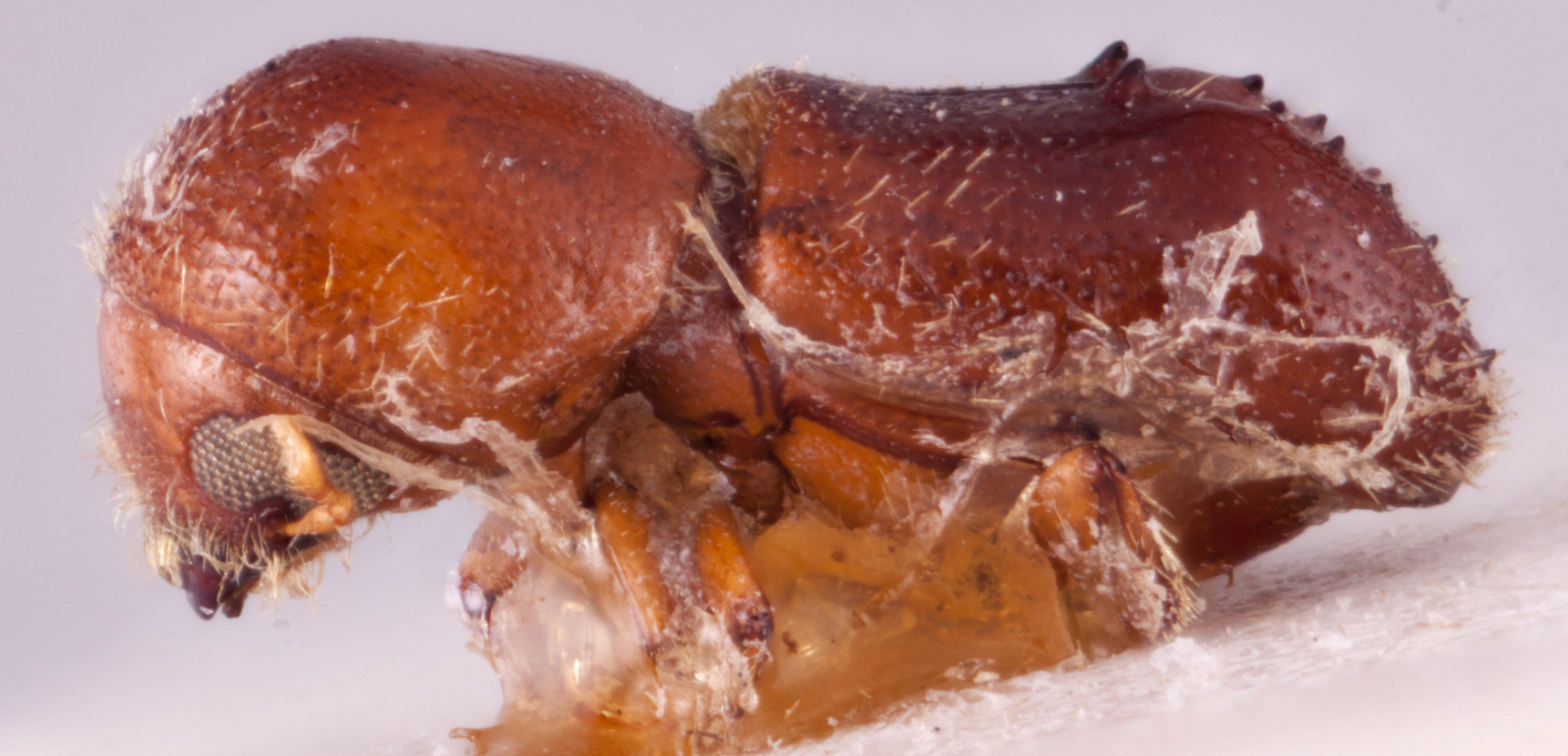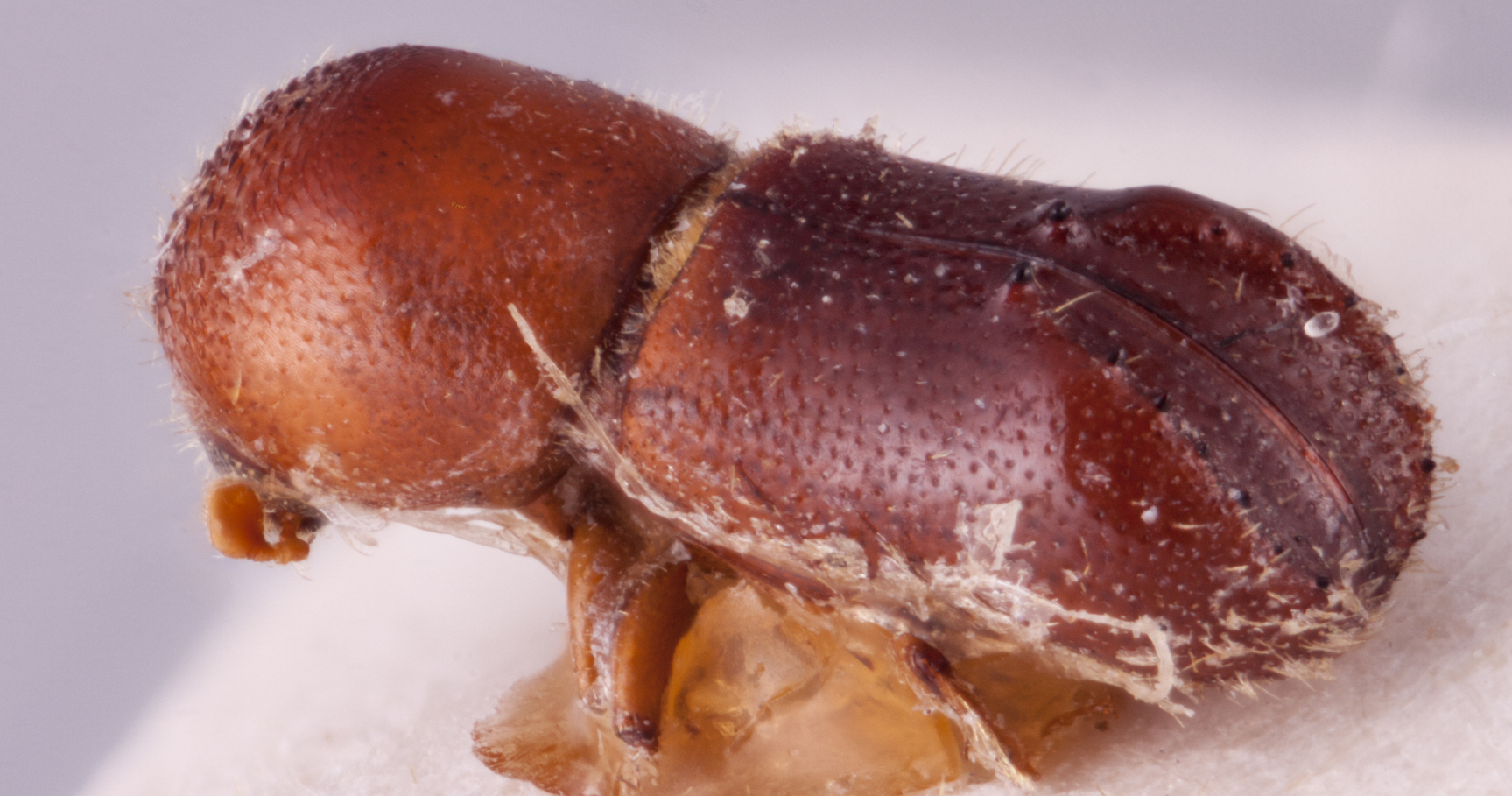Microperus cruralis
|
Microperus cruralis holotype lateral; R.K. Osborn |
|
Microperus cruralis holotype dorsal; R.K. Osborn |
|
Microperus cruralis holotype declivity; R.K. Osborn |
|
Microperus cruralis holotype frontal; R.K. Osborn |
Taxonomic history
Xyleborus cruralis Schedl, 1975b: 456.
Coptodryas cruralis (Schedl): Beaver, 1995a: 201.
Microperus cruralis (Schedl): Smith et al. 2020b: 287.
Synonyms
Xyleborus myllus Browne, 1986a: 92. Sittichaya et al. 2021: 202.
Diagnosis
3.0−3.1 mm long (mean = 3.03 mm; n = 3); 2.5−2.82 times as long as wide. This species is distinguished by its large size; elytralelytral:
pertaining to the elytra
discdisc:
the flat central upper surface of any body part (e.g. pronotum and elytra) broadly, deeply transversely impressedimpressed:
broadly, deeply transversely impressedimpressed:
a depression in a surface
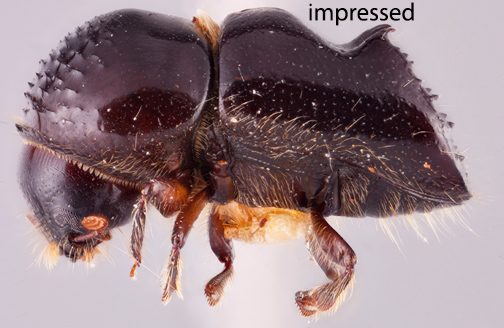 with a saddle-like depression from scutellumscutellum:
with a saddle-like depression from scutellumscutellum:
a shield-like sclerotized plate located at the midpoint of the elytral base
to declivitaldeclivital:
pertaining to the elytral declivity
basebase:
point or edge closest to the body; opposite of apex ; elytralelytral:
; elytralelytral:
pertaining to the elytra
declivitydeclivity:
downward slope of either the pronotum or elytra
 deeply sulcatesulcate:
deeply sulcatesulcate:
deeply furrowed or grooved
, its margins lined by large tuberclestubercle:
a small knob-like or rounded protuberance of the exoskeleton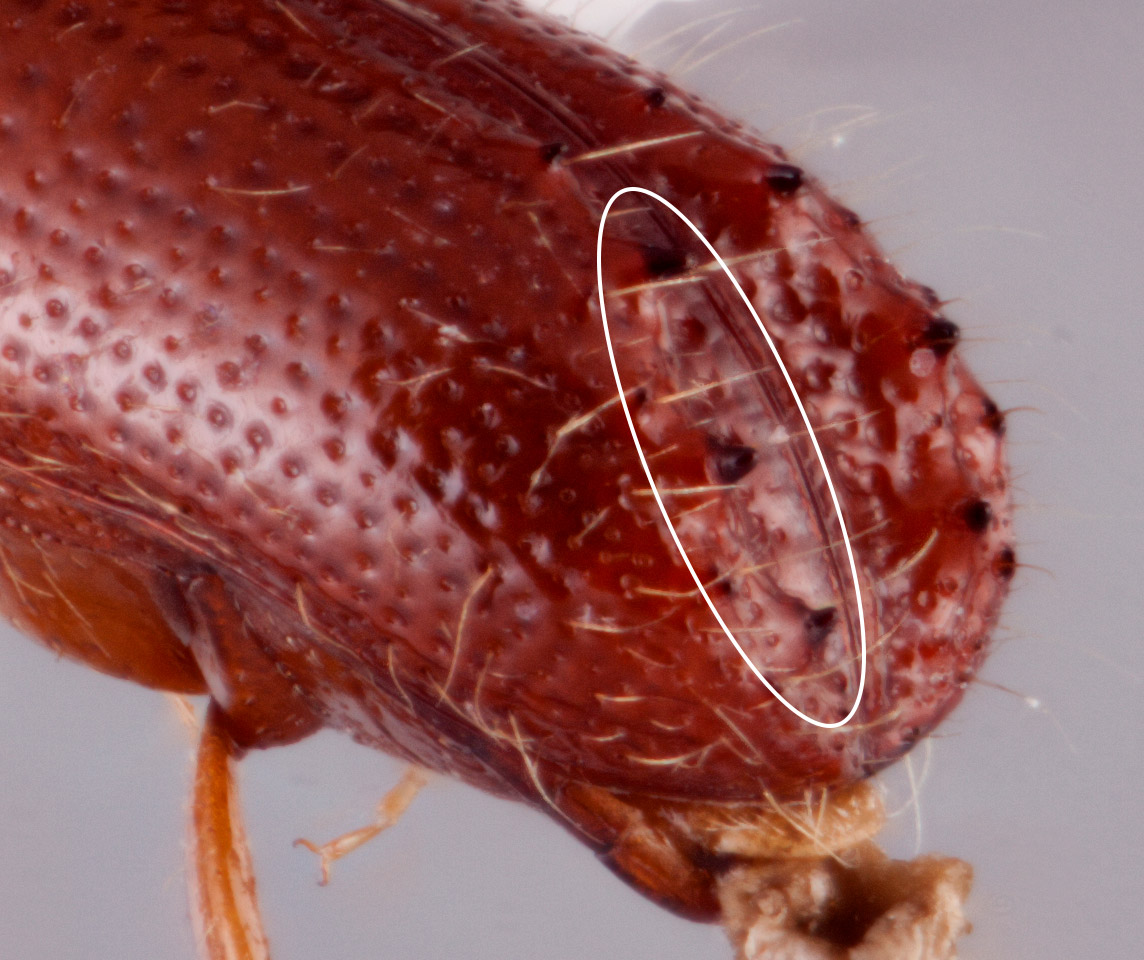 on interstriaeinterstria:
on interstriaeinterstria:
longitudinal spaces along the elytra between the striae, which is not as<br />
impressed and bear smaller punctures.
 1, 3−6; elytralelytral:
1, 3−6; elytralelytral:
pertaining to the elytra
basebase:
point or edge closest to the body; opposite of apex emarginated from sutural margin to interstriainterstria:
emarginated from sutural margin to interstriainterstria:
longitudinal spaces along the elytra between the striae, which is not as<br />
impressed and bear smaller punctures.
 4 to accommodate mycangial tuftmycangial tuft:
4 to accommodate mycangial tuftmycangial tuft:
tuft of setae that denotes the mycangia exterior opening
 , mycangial tuftmycangial tuft:
, mycangial tuftmycangial tuft:
tuft of setae that denotes the mycangia exterior opening
 setae long, very dense; and posterolateralposterolateral:
setae long, very dense; and posterolateralposterolateral:
relating to end of the side part/portion
 costacosta:
costacosta:
elevated ridge that is rounded at its crest, not necessarily with sharp appearance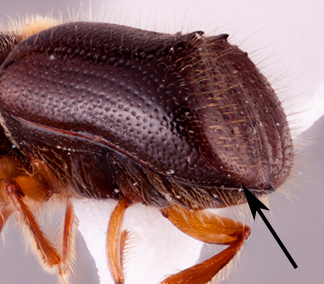 absent.
absent.
May be confused with
Microperus nugax, M. sagmatus, and M. undulatus
Distribution
Cambodia, Laos, Thailand
Host plants
unknown (Smith et al. 2020bSmith et al. 2020b:
Smith SM, Beaver RA, and Cognato AI. 2020b. A monograph of the Xyleborini (Coleoptera, Curculionidae, Scolytinae) of the Indochinese Peninsula (except Malaysia) and China. ZooKeys 983: 1-442. https://doi.org/10.3897/zookeys.983.52630)
DNA data
specimens not available for sequencing

